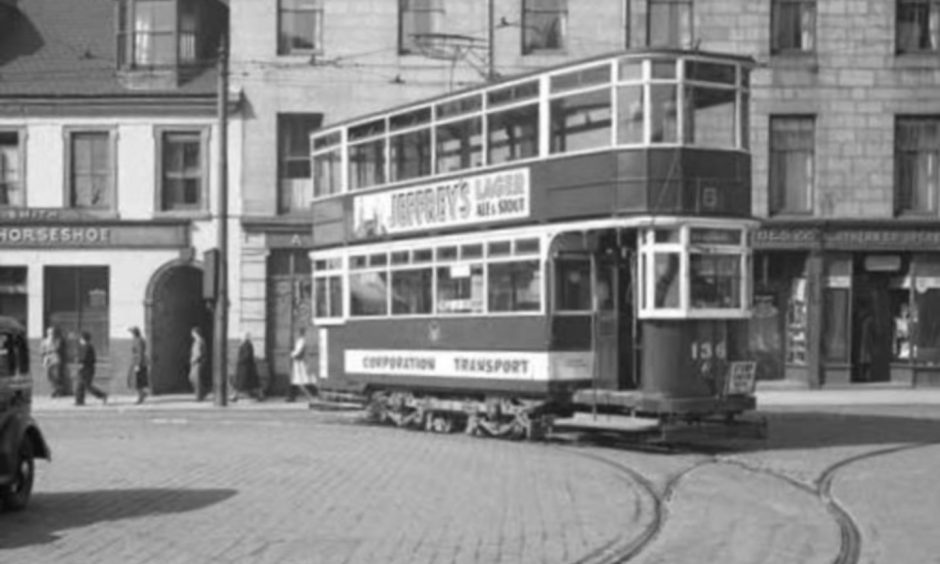
When the last Rosemount tram ran in 1954, “a human avenue a-mile-and-a-half long threw Aberdeen into traffic chaos”.
Thousands of people lined the streets from Castlegate to Queen’s Cross Depot to watch the final tram trundle through Rosemount.
Cars, buses and trams were brought to a complete standstill as the city gave way to the humble work horse.
The tramway ended as it began, with a horse drawn tram car carrying members of the very department who voted for its demise.
A sight once so common in Aberdeen, the horse drawn tram, was an alien spectacle.
Rosemount tram loop was installed in just 20 weeks in 1888
The Rosemount trams were horse-drawn when the route opened on November 30 1888.
But 14 years later, they deferred to technology as Aberdeen’s tramways became electrified.
The Rosemount loop transported passengers from Union Terrace to Queen’s Cross via Rosemount.
It took just 20 weeks to install the new route, including the laying of steel girder rails, and new setts on either side of each rail made of granite from Rubislaw, Cove and Cairncry quarries.
Within two years, the Rosemount section accounted for a fair quota of the tramways’ profit.
But trams sometimes struggled on hilly Rosemount. In bad snow, three horses were required to haul a load of Aberdonians up Rosemount Viaduct and South Mount Street.
A former conductor on the Rosemount route, Mr Philip, reminisced in 1943 about the horse drawn trams.
He explained the horses worked on two-hour shifts and the wise creatures knew the exact number of runs they had to do in one shift.
When they knew they were finished they pulled up at Queen’s Cross of their own accord to be unyoked.
Mr Philip was well-known on the Rosemount trams for always wearing a buttonhole flower. Something of a local legend, he had worked that route his entire career.
Aberdeen councillor predicted buses would replace trams within a decade in 1945
But in 1945, architect and councillor Scott Sutherland suggested the city should be scrapping its tramway system in favour of motorbuses.
His motion received no support.
However, Mr Sutherland told members that he would “give £100 to any charity if his forecast that a new and improved transport system, other than tramways, did not eventuate in 10 years”.
And fewer than 10 years later his prediction began to manifest; buses were replacing trams.
Although it’s not clear whether any charity benefitted from his quip.
For Rosemount, the beginning of the end started on June 24 1954.
Decision was made to ‘abandon’ Rosemount trams to save money
The council’s transport committee “decided in favour of abandoning tramcars on the Rosemount route at the end of the summer season”.
Although the final decision had to be approved by the full council, the Rosemount tram was running on borrowed time.
The proposal was to replace 12 trams by eight buses to save £11,000 a year for the first five years, and £15,000 annually thereafter.
The estimated yearly saving took into account the repair of the streets along which the trams ran.
But there were concerns that this was “only the first step in the abandonment of all trams in the city”.
Beginning of the end for Aberdeen’s tramways in summer 1954
Indeed, the committee agreed after the Rosemount tram had been taken off the rails that it would consider Aberdeen’s tramway as a whole.
The council faced a spend of £177,000 to recondition the tracks across Aberdeen, but removing the trams would save this cost.
Although it did have to foot the cost of restoring the roadway to its pre-tram state in accordance with an agreement in 1880 when the corporation took over the network.
After September, trams No.3, No.5, and No.6 would disappear from Rosemount for good after 66 years.
Mr Frazer, city transport manager, said the change to buses would give a better service in Rosemount.
He explained: “Whereas the trams at present on Rosemount give a four-minute service at the rush hours and six to seven minutes at other times, passengers will have a three-minute service at rush hours and four minutes at other times.”
Rosemount tram’s farewell was more akin to ‘gala’ as crowds blocked roads
To mark the closing of the Rosemount tramway, the city’s oldest tram was rolled out and pulled by two Clydesdale horses.
Bill and Betsy, the horses for the occasion, were loaned by Aberdeen Co-operative Society.
It was reported the event would have passed “uneventfully had it not been decided to mark it by trotting out two heavy horses”.
Adding the open-topped, wooden-seated tramcar made it look “much more ancient that its 70 years”.
The Evening Express’ coverage described the farewell as being more akin to a gala occasion.
The horses clip-clopping up Rosemount “started a chain of events which led to one of the most fantastic scenes in the city’s history”.
‘Complete chaos’ as people watched Bill and Betsy pull oldest tramcar
Thousands of people from Castle Street to Queen’s Cross gathered “with complete disregard for other traffic”.
Aberdonians lined the actual tram rails to get a closer look, resulting in “complete chaos” in the city centre.
Traffic had to stop entirely “or run the risk of knocking folk down”, as bottlenecks were created at every junction.
People from the outskirts of the city flocked to the heart in scenes that were “reminiscent of victory celebrations”.
For a time, Bill and Betsy were driven by Lord Provost Graham himself, as they “stuck gallantly to their task” despite the excited crowds.
But with a tramload of council officials, the steep incline from Rosemount Viaduct, which troubled horses decades before, was too much for Bill and Betsy.
Assembly awaited at end of the line for final Rosemount tram
Seemingly, to help the horses take the strain, the old wooden tram was gently nudged along Rosemount by an electric one behind.
But still struggling, Betsy stumbled at the junction of South Mount Street with Baker Street.
The horses were unhitched at this point to allow the electric tram to push the veteran vehicle to the top of the hill, where Bill and Betsy took over once again.
One of the biggest crowds was at Castle Street to wave off the trams, while another great assembly awaited at the journey’s end.
A run that normally took 12 minutes to complete took one hour exactly.
And none the worse for their five minutes of fame, Bill and Betsy were back on their milk cart rounds early the next morning.
But unlike Bill and Betsy, the tramcars wouldn’t be seen again on the streets of Rosemount.
If you enjoyed this, you might like:

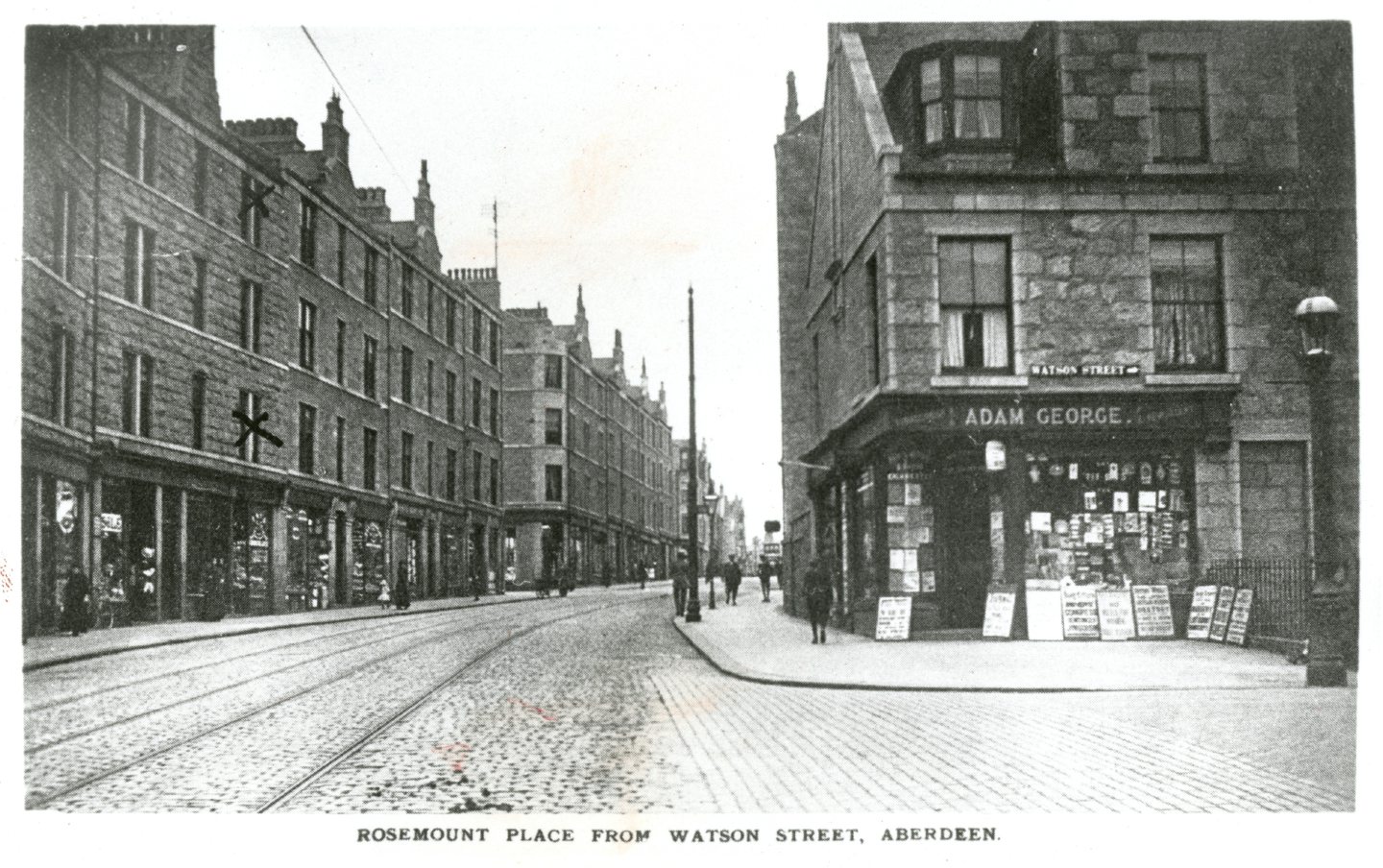
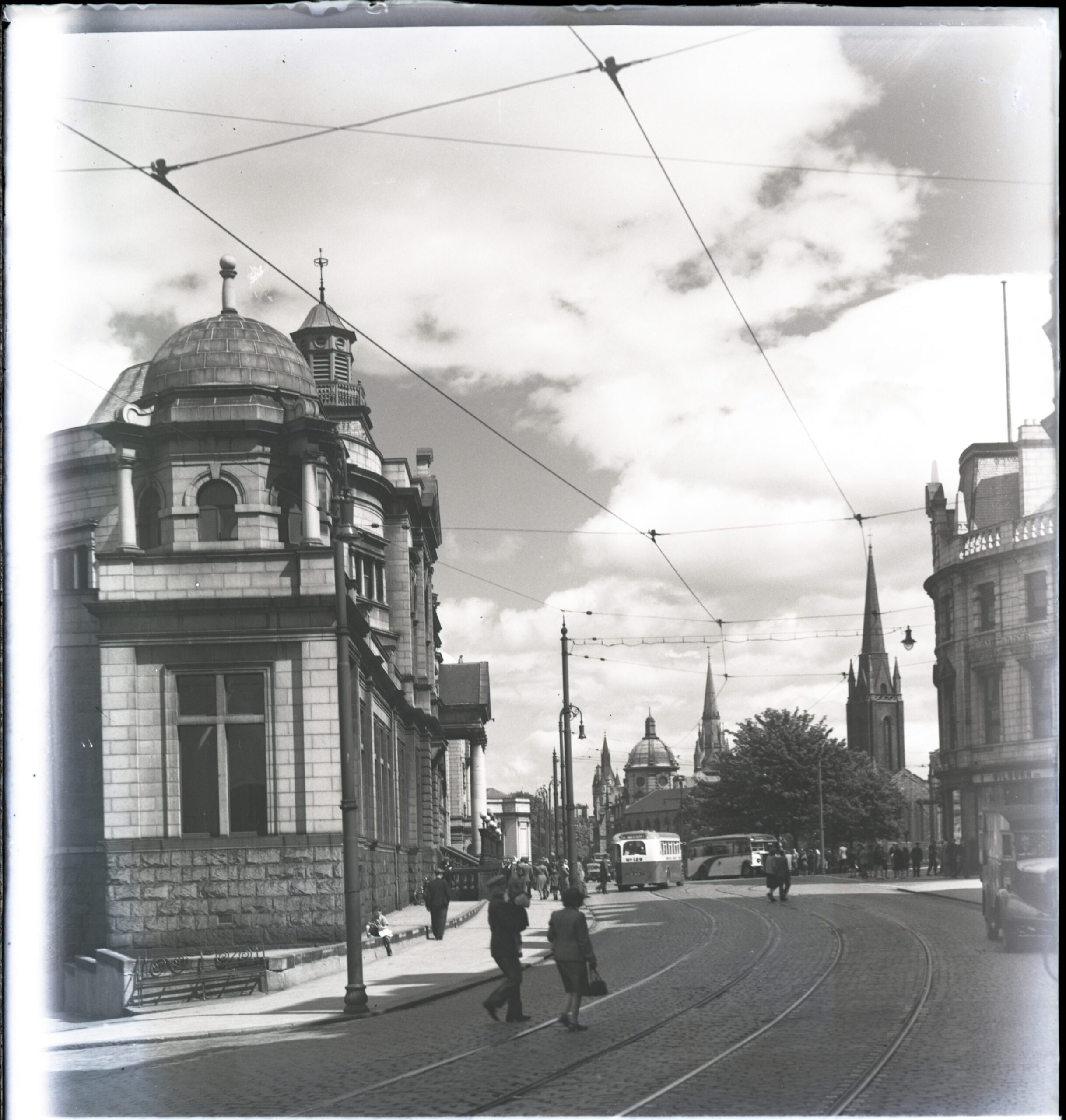
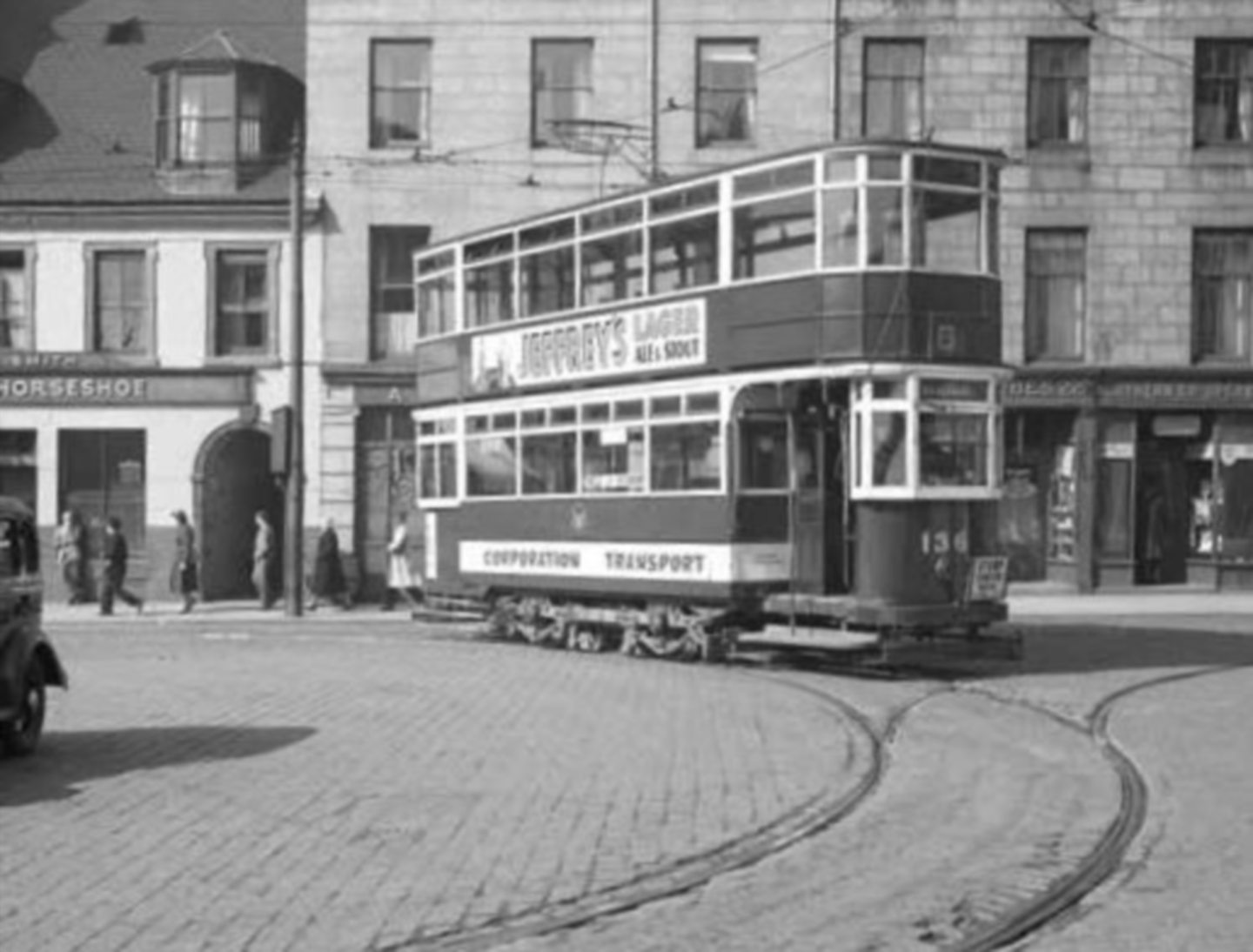
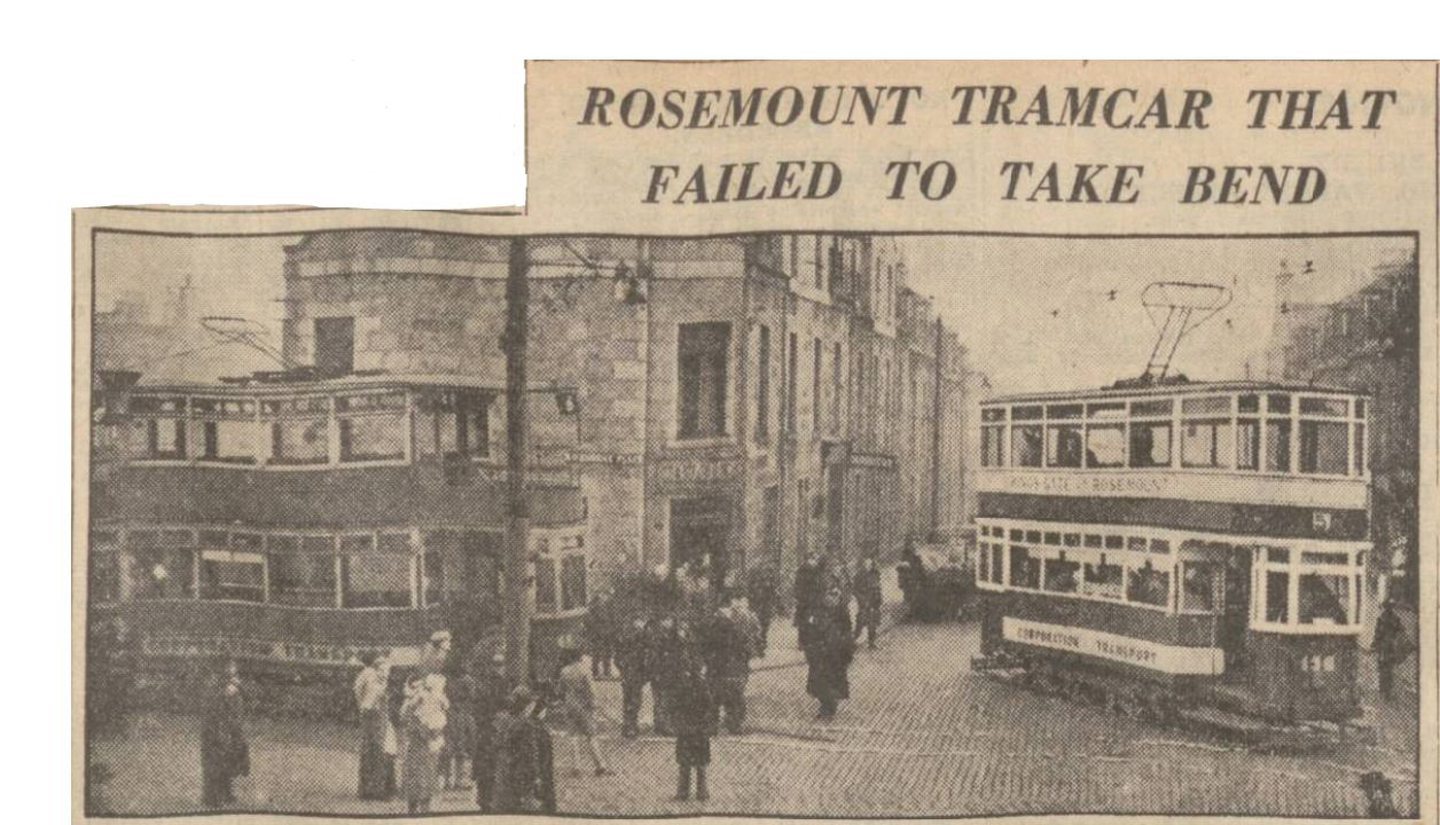
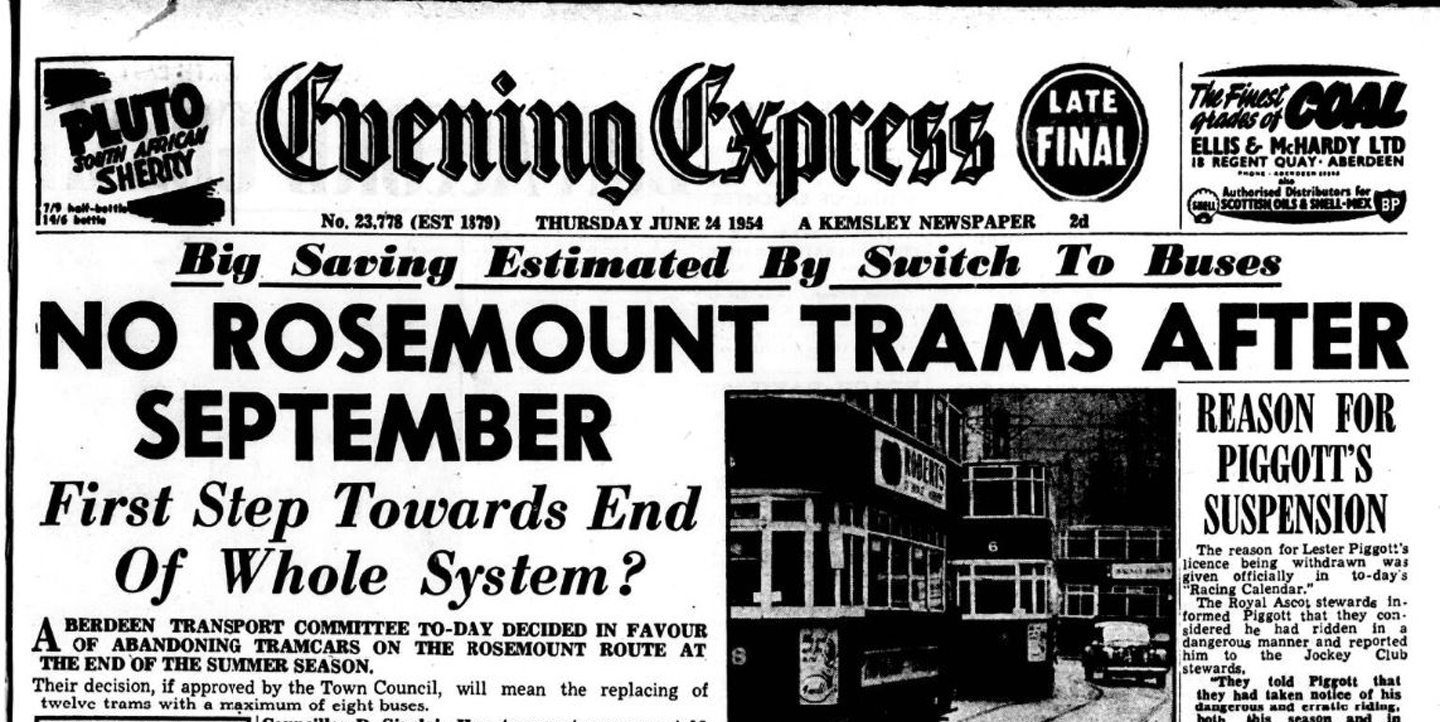
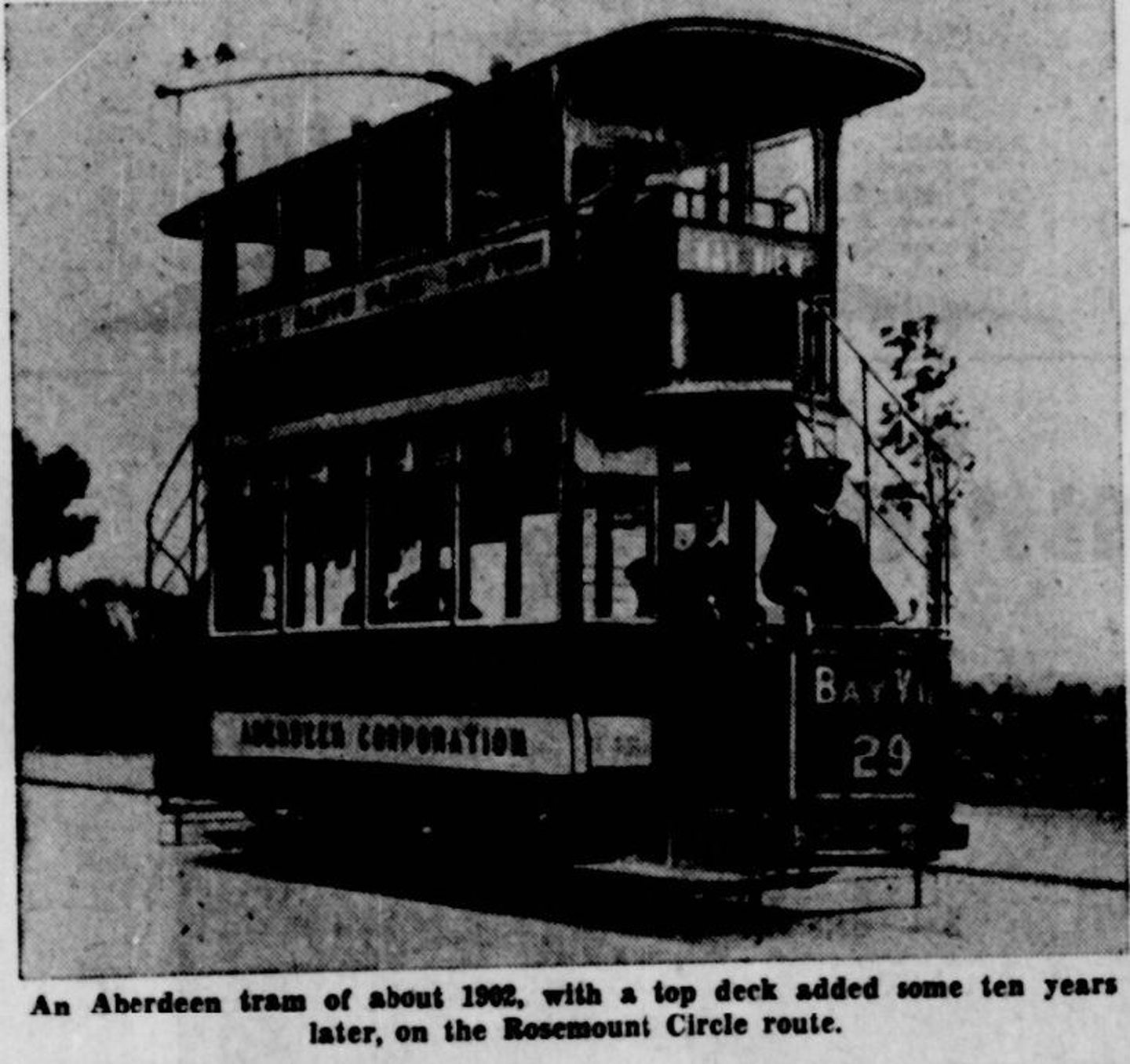
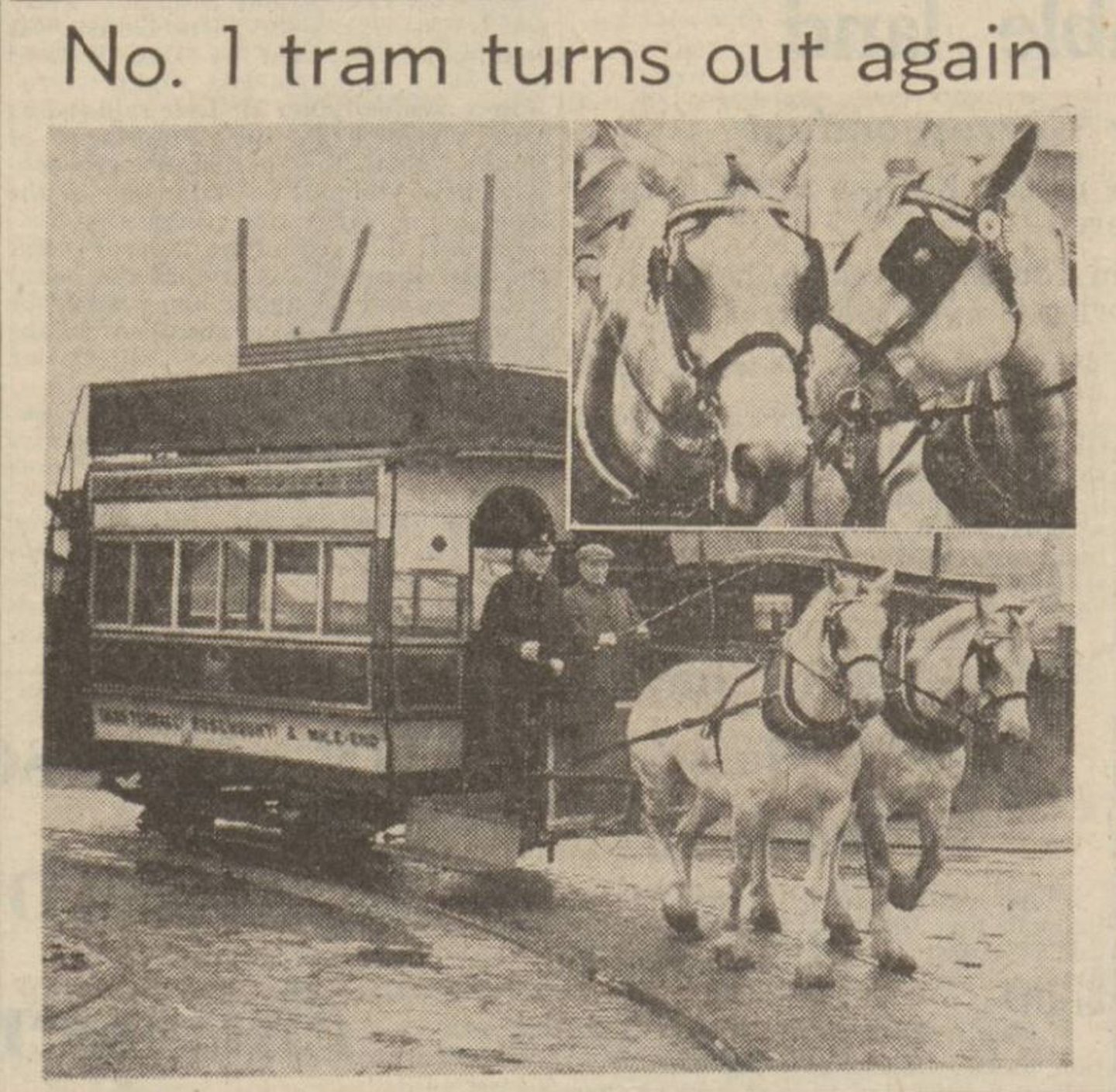
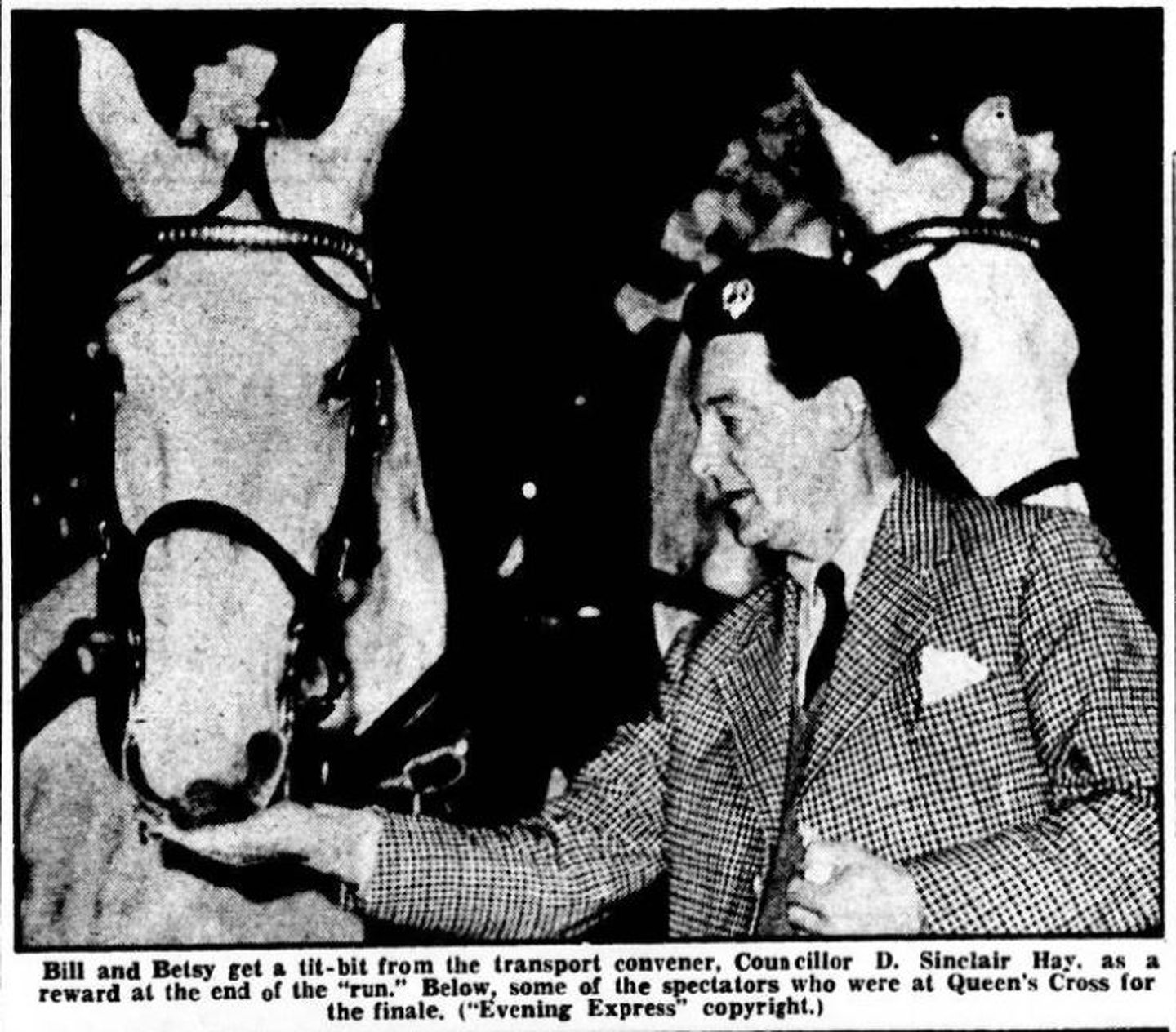

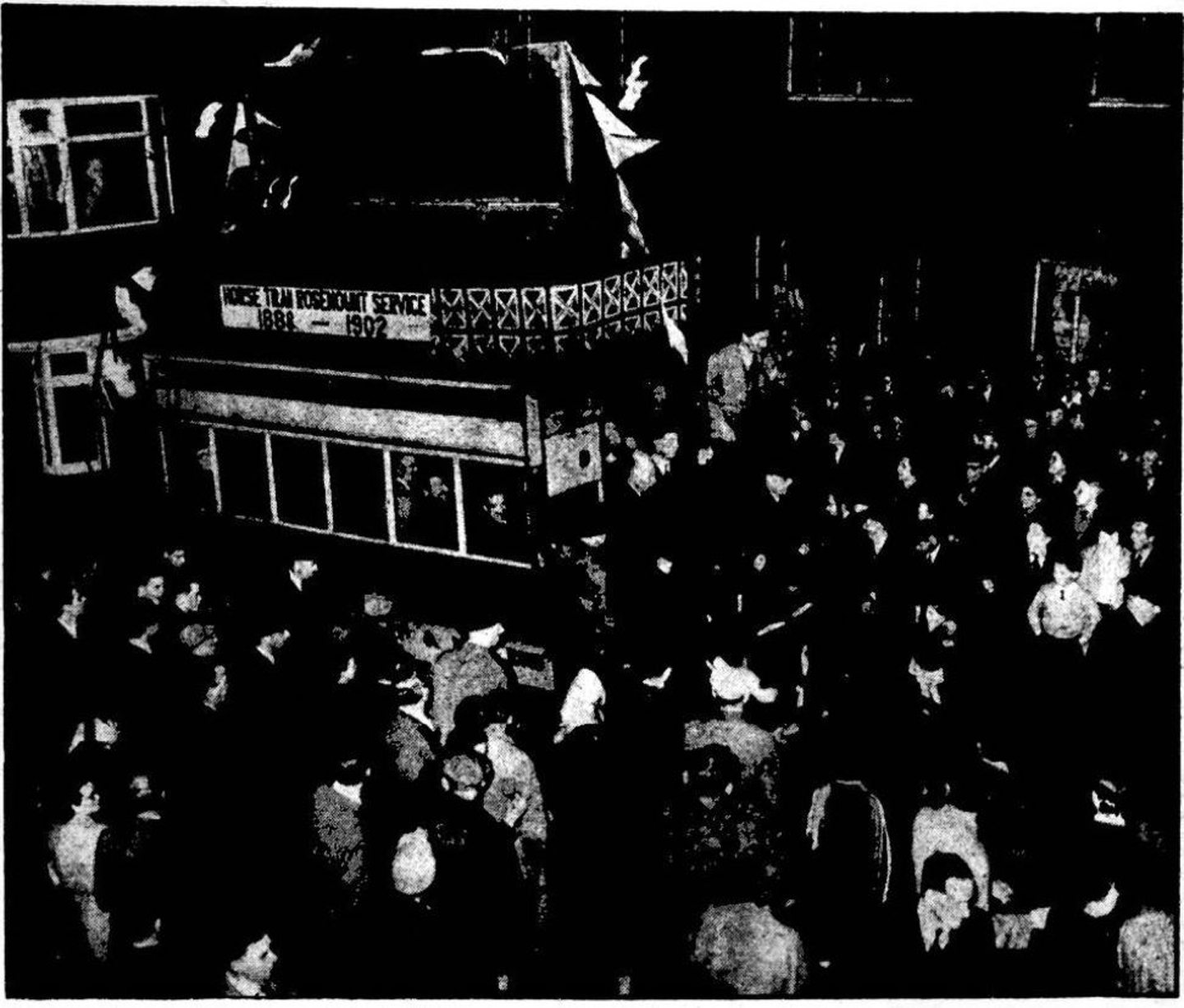
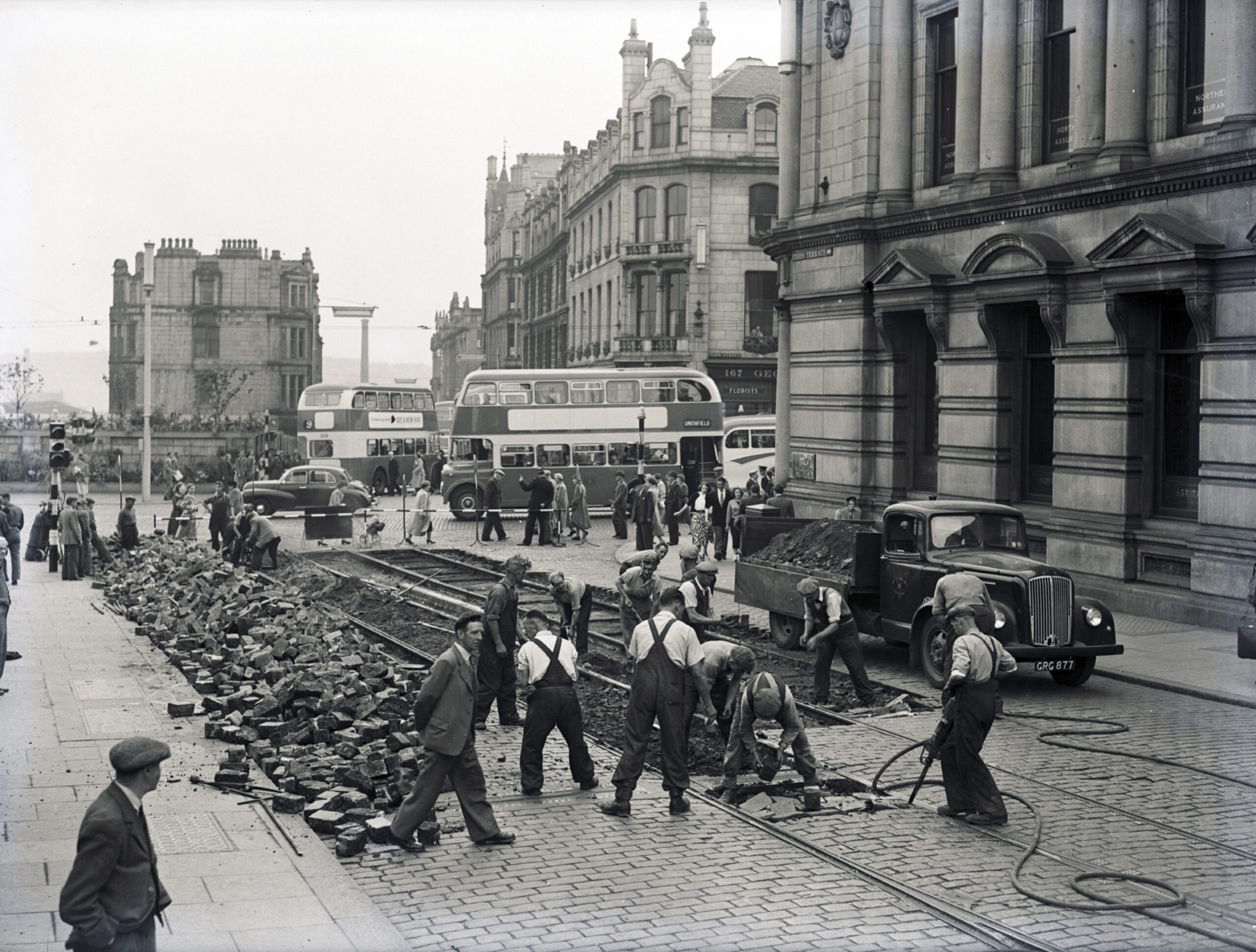
Conversation